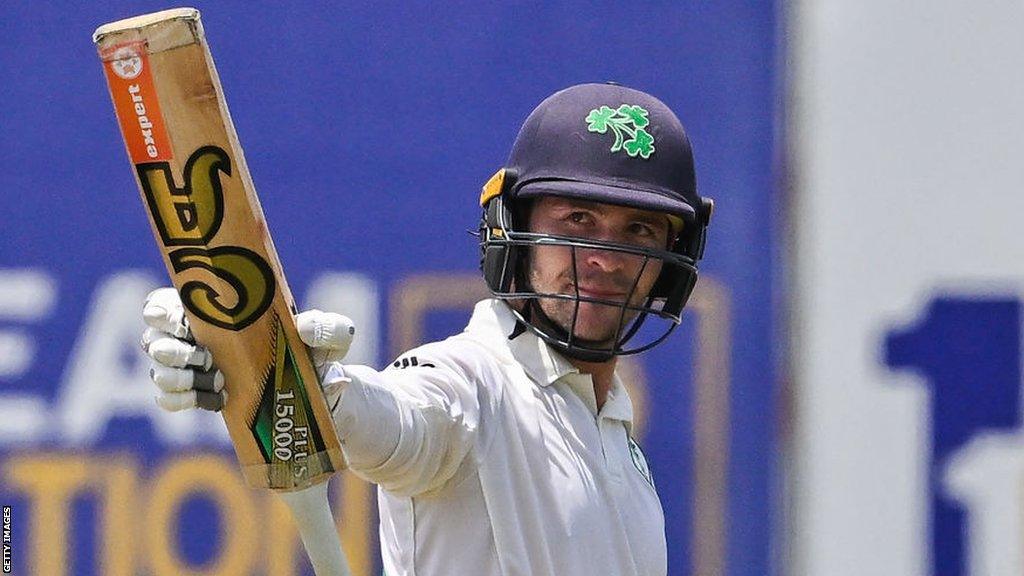Sri Lanka v Ireland: Tourists post highest Test score of 492
- Published

Curtis Campher top-scored for Ireland in their first innings with 111
Second Test (day two of five), Galle |
Ireland 492 all out: Campher 111, Stirling 103, Balbirnie 95 |
Sri Lanka 81-0: Madushka 41*, Karunaratne 39* |
Ireland posted their highest Test score of 492 as Paul Stirling and Curtis Campher became the third and fourth Irishmen to hit centuries in the game's longest format.
Before rain stopped play on day two in Galle, Sri Lanka reached 81 without loss in reply, 411 runs behind.
Nishan Madushka was unbeaten on 41 and Dimuth Karunaratne 39 not out.
Stirling scored 103 and Campher 111 after captain Andy Balbirnie made 95 on the opening day.
Lorcan Tucker scored a useful 80 while Prabath Jayasuriya, the home hero of the first Test, took five wickets for 174.
Asitha Fernando and Vishwa Fernando took two wickets each for the home side.
Ireland only gained Test status in 2017 and have lost all five games in the red-ball format.
Their previous highest Test score was 339 against Pakistan in their inaugural match in 2018.
In punishingly hot and humid conditions, Stirling retired hurt with cramps on day one after reaching 74 but came back to the crease the following morning after Tucker fell.
Stirling reached his maiden Test century in style, upper-cutting Fernando for six over deep point.
The batter now has centuries in all three formats of the game.
Soon afterwards the same bowler dismissed Stirling for 103 as he hooked a short delivery into the hands of Dhananjaya de Silva on the fine-leg boundary.
Campher was well caught by a diving De Silva at first slip to give Jayasuriya his third wicket in the innings.
Sri Lanka's openers negotiated the final session without much trouble, although Ireland's quicks found the outside edge of Madushka's bat with the new ball.
Ireland trail 1-0 in the two-match series after losing the first Test by an innings and 280 runs.

The challenges of policing Britain's biggest beat: Follow the Highland Cops as they fight crime
From civilians to frontline soldiers: Stacey Dooley goes inside the British Army’s combat programme
